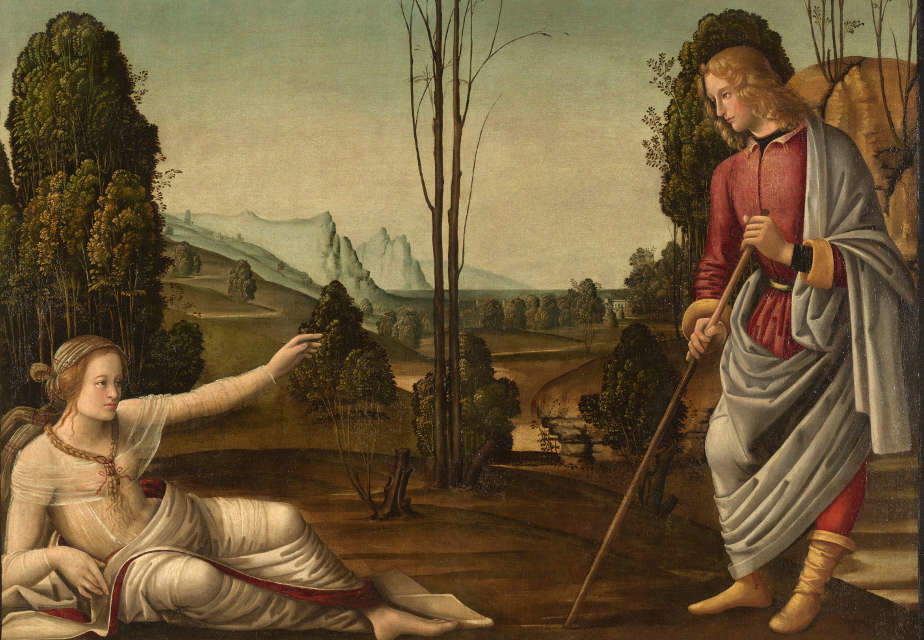In Madrid, the Prado Museum has received on deposit two 15th-century canvases dedicated to the story of Cimone and Iphigenia, one of the novellas included in Giovanni Boccaccio’s Decameron. Both paintings were made in Florence in the late 15th century by Johannes Hispanus.
These are two exceptional canvases because, in both, the authorship of a Spanish painter active in 15th-century Italy is combined with a secular theme, reflecting on the value of culture in seduction, linked to Boccaccio’s Decameron and the neo-Platonic doctrines that circulated in humanist circles in Florence at the end of the 15th century. These works can be seen in Room 56 B of the Villanueva Palace along with the History of Nastagio degli Onesti, another narrative from the Decameron, painted in this case by Sandro Botticelli.
Johannes Hispanus is an interesting but little-known painter of Spanish origin who was active in northern and central Italy in the late 15th and early 16th centuries, whose most famous work is a Deposition at the Tomb preserved in Milan in the Saibene Collection. The two canvases deposited at the Prado correspond to the first Florentine leg of his Italian journey, closely associated with Perugino’s workshop. The silent calm of the landscape and the enchanted atmosphere surrounding the characters stand out in these works.
The secular theme is another noteworthy element, given the rarity of this type of iconography in the Prado’s collection of 15th-century paintings. The story, inspired by one of the novellas in Boccaccio’s Decameron, recounts that while sleeping in a grove, Iphigenia was surprised by Cimone, a noble but uncouth and ignorant young Cypriot. Fascinated by the lady’s beauty, the rough Cimone decided to acculturate himself, becoming a skilled and refined courtier to woo her.
Johannes Hispanus evokes two moments in the story. The first of the canvases shows a young woman sitting on the ground, clothed and asleep, near a fountain. She is Iphigenia’s lady, whom Cimon ignores by turning his back on her. His attention is turned to Iphigenia, who in the second canvas is seen lying half-naked beside a grove before Cimone’s ecstatic gaze.
This pictorial translation of Boccaccio’s story was conceived in the circles of Florentine Neoplatonism that postulated the redemptive and civilizing power of beauty, particularly feminine beauty, a symbol of perfection and truth.
 |
| Madrid, Prado receives two important canvases by Johannes Ispanus |
Warning: the translation into English of the original Italian article was created using automatic tools. We undertake to review all articles, but we do not guarantee the total absence of inaccuracies in the translation due to the program. You can find the original by clicking on the ITA button. If you find any mistake,please contact us.